Category: Life Sciences
Showing 81–100 of 245 resultsSorted by latest
-
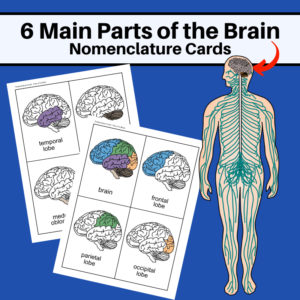 $2.00Buy Now
$2.00Buy Now6 Main Parts of the Brain – Human Anatomy Nomenclature Cards – This resource will help students learn and study the following parts of the brain: frontal lobe, parietal lobe, occipital lobe, temporal lobe, cerebellum and the medulla oblongata.
-
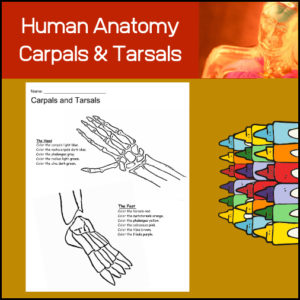 $1.25Buy Now
$1.25Buy NowOn this one page worksheet titled Carpals and Tarsals, students identify the bones of the hands (+ wrist and lower arm) and feet (+ lower leg): carpals, metacarpals, phalanges, radius, ulna, tarsals, metatarsals, phalanges, calcaneus, tibia and fibula.
Suggested uses: Use in a Science center when studying human anatomy, give as homework or use as a quick quiz. Answer key is provided.
-
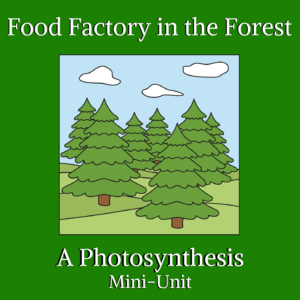 $1.99Buy Now
$1.99Buy NowThis cross-curricular resource will inform and assess students’ understanding of the basic process of photosynthesis. Includes both close reading and a cloze activity.
-
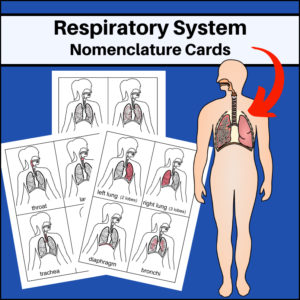 $2.00Buy Now
$2.00Buy NowRespiratory System – Human Anatomy Nomenclature Cards – This resource will help students learn and study the location of the following parts of the respiratory system: left lung, right lung, diaphragm, bronchi, bronchioles, alveoli, sinus cavity, nose, throat, larynx, trachea, and pleura. There are also 4 extra diagrams with no labels for you to use as you wish…such as give to students to have them color in and label the cards for themselves!
-
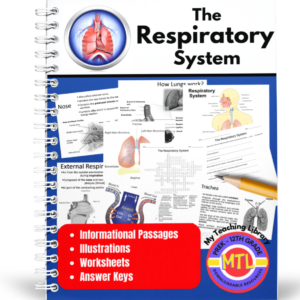 $5.00Buy Now
$5.00Buy NowStudents will learn all about the respiratory system with this resource designed for middle and high school biology / anatomy students. Students will learn about the nose, pharynx, larynx, trachea, lungs, pleura, diaphragm and more.
This resource includes:
- 22 informational pages with details and illustrations
- 8 posters
- 6 worksheet pages (a 3 page detailed short answer worksheet to use along side the informational pages, 2 labeling worksheets and a crossword puzzle)
- answer keys
-
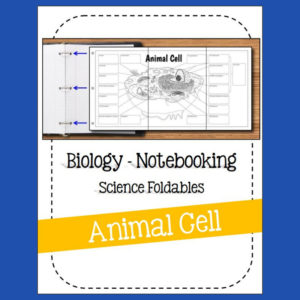 $3.00Buy Now
$3.00Buy NowHigh School Biology Notebook resource!
Students will learn the following terms: peroxisome, cilium, centriole, lysosome, cell / plasma membrane, cytoplasm, mitochondrion, smooth endoplasmic reticulum, flagellum, cytoskeleton, nuclear pores, nuclear membrane / envelope, DNA, nucleolus, nucleus, rough endoplasmic reticulum, ribosomes, Golgi body, Golgi vesicles
-
 $3.00Buy Now
$3.00Buy NowStudying the state of Alabama? Perhaps doing a unit on Ornithology? This project based unit is designed to help students study and record information about Alabama’s state bird – the Northern Flicker!
What type of pages are contained in this set:
– A map page (for the state)
– Scientific classification page
– A page for students to give details about the bird’s physical description, habitat, diet, life span and reproduction
– A page where students will do additional map work to show where in the U.S. the bird lives in addition to migration information
– Coloring page
– Several pages on which students can use for expository and/or creative writing as well as sections in which students may draw.14 pages in all and is designed for different levels / abilities.
My Teaching Library has a notebooking set for each of all 50 states. In addition, you can get all of them bundled!
If you only want a specific state, type in the search bar the state you want + ‘notebooking set’ (Example: West Virginia Notebooking Set)
Here are other bird related products you’ll love…
-
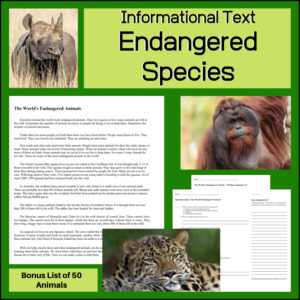 $1.75Buy Now
$1.75Buy NowThis cross-curricular (Language Arts – Science) informational article has been designed to help students gain a better understanding of why some animals in our world are endangered. The article will list causes such the need for more land and food for humans as well as pollution and hunting. Students will also be given several examples of animals from around the world that are in danger and what we need to learn in order to make plans to help them survive.
-
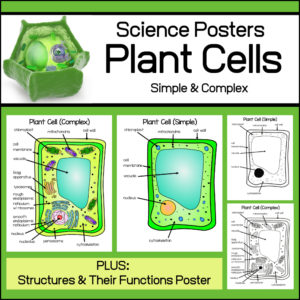 $2.25Buy Now
$2.25Buy NowThis Science / Biology resource offers 5 posters – Color posters which are perfect for bulletin boards or centers and B/W posters which are great to use as student handouts.
-
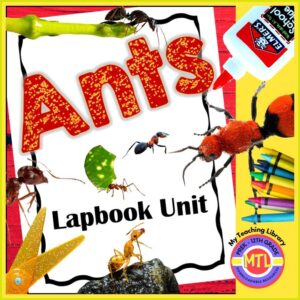 $7.00Buy Now
$7.00Buy NowStudents love studying insects and the ‘common’ ant may not seem so common after this unit where they will learn all about ants! Ants have some unique capabilities and there are more than 10,000 known ant species around the world. This resource is an interactive, hands-on Science project that will engage your classroom in student centered learning.
🐜During the process, students will learn about…
- – Life Cycle of an Ant
- – Types of ants
- – Social structure of an Ant Colony
- – Food and Habitat of Ants
- – Ant Communication
- – Ant Predators
- – Positive and Negative Ecosystem Impact of Ants
- – Anatomy of the Ant…and more!
After completion, students will have a beautiful 3D project to keep. Projects can be individual or you can assign as a cooperative learning activity.
🐜 Includes:
- Informational text about ants (life of the ant, communication, food, appearance, anatomy, habitat and more)
- Posters and diagrams of life cycle and ant anatomy
- Flash cards of 15 different types of ants (pics and information)
- Fun fact cards
- Suggested vocabulary (with definitions)
- Templates for project
- Template instructions / Project instructions
-
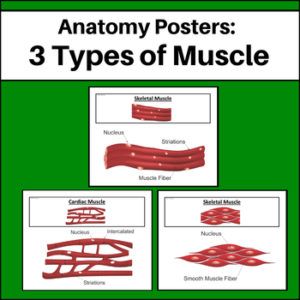 $2.00Buy Now
$2.00Buy NowPerfect for any Biology / Anatomy Classroom teaching human anatomy: Anatomy Posters – Types of Muscle. These 3 colorful posters will help students quickly identify each type of muscle (Cardiac, Skeletal, Smooth) as well as the parts of each muscle.
-
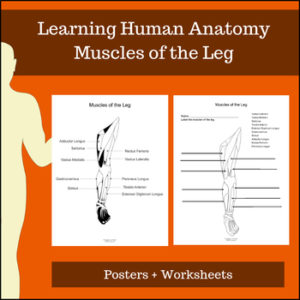 $1.50Buy Now
$1.50Buy NowMuscles of the Leg – Learning Human Anatomy will be exactly what you need if you are looking for a easy to read posters as well as a labeling worksheet for students. This resource actually comes with two worksheets, one with and one without terms. (You choose if you want your students to completely remember the names or if they need the terms to help them. )
See description below for more information.
-
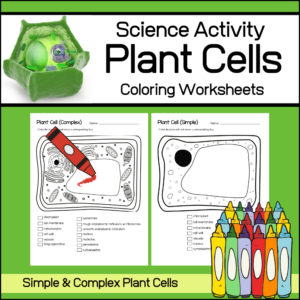 $1.25Buy Now
$1.25Buy NowInteractive Science learning – This resource includes 2 coloring worksheets: Simple Plant Cell and Complex Plant Cell. As students color (identify) each part, they will also create a corresponding key.
Structures to be identified and colored:
1. Simple Plant Cell – cell wall, mitochondria, chloroplast, cell membrane, vacuole, nucleus, cytoskeleton
2. Complex Plant Cell – cell wall, mitochondria, chloroplast, cell membrane, vacuole, Golgi apparatus, lysosomes, rough endoplasmic reticulum w/ ribosomes, smooth endoplasmic reticulum, nucleus, nucleolus, peroxisome, cytoskeleton
-
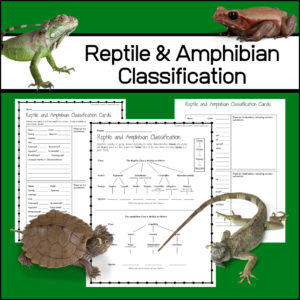 $2.25Buy Now
$2.25Buy NowThis Science / Biology resource includes 2 student exercises plus classification card templates that can be used for centers, projects and more.
-
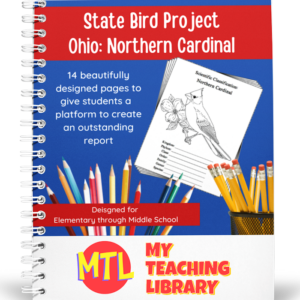 $3.00Buy Now
$3.00Buy NowStudying the state of Ohio and state symbols? What is the state bird of Ohio?
This project-based unit is designed to help students study and record information about Ohio’s state bird: Northern Cardinal
⭐ 14 pages in all and is designed for different levels / abilities.
– A map page (for the state)
– Scientific classification page
– A page for students to give details about the bird’s physical description, habitat, diet, life span and reproduction
– A page where students will do additional map work to show where in the U.S. the bird lives in addition to migration information
– Coloring page
– Several pages on which students can use for expository and/or creative writing as well as sections in which students may draw.My Teaching Library has a notebooking set for each of all 50 states. In addition, you can get all of them bundled!
Here are other bird related products you’ll love…
- North American Birds of Prey Research / Report Pages
- Birds if Prey Flashcards
- Audubon’s Birds – Coloring Book (80 species)
- U.S. State Birds Coloring Book
-
 $2.25Buy Now
$2.25Buy NowThis Science / Biology resource offers 2 labeled posters showing the structures and organelles of an animal cell! I’ve also included a handout detailing the major function(s) of each structure/organelle. Structures and organelles include: centrosome, plasma membrane, mitochondria, vacuole, Golgi apparatus, ribosome, lysosomes, rough endoplasmic reticulum, smooth endoplasmic reticulum, nucleus, nucleolus, peroxisome, cytoplasm
-
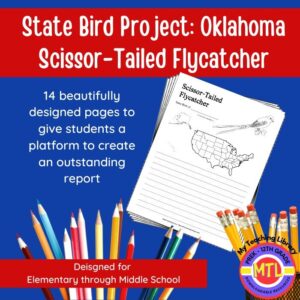 $3.00Buy Now
$3.00Buy NowStudying the state of Oklahoma? Perhaps doing a unit on Ornithology? This project-based unit is designed to help students study and record information about Oklahoma’s state bird – Scissor-Tailed Flycatcher!
Included:
– A map page (for the state)
– Scientific classification page
– A page for students to give details about the bird’s physical description, habitat, diet, life span and reproduction
– A page where students will do additional map work to show where in the U.S. the bird lives in addition to migration information
– Coloring page
– Several pages on which students can use for expository and/or creative writing as well as sections in which students may draw.14 pages in all and is designed for different levels / abilities.
My Teaching Library has a notebooking set for each of all 50 states. In addition, you can get all of them bundled!
If you only want a specific state, type in the search bar the state you want + ‘notebooking set’ (Example: West Virginia Notebooking Set)
Here are other bird related products you’ll love…
-
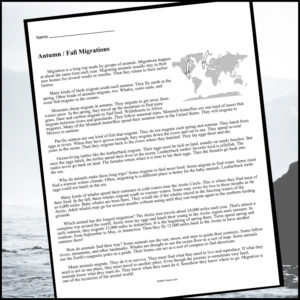 $1.00Buy Now
$1.00Buy NowAutumn / Fall Migration – Informational Text is a 5 page resource that will give students valuable information about the migration of many types of animals from around the world that migrate every Autumn.
Information in the text includes:
- What migration is
- What type of animals migrate (examples)
- Why animals migrate
- Which animal has the longest migration
- How animals find their way
After students read the one page of informational text, there are 3 additional student pages to answer questions (multiple choice, short answer and essay).
Flesch-Kincaid Grade Level: 5
-
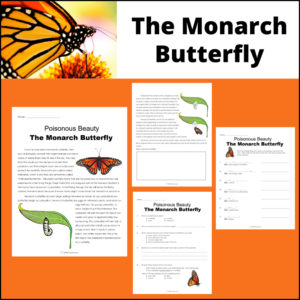 $1.50Buy Now
$1.50Buy NowThis Science article teaches students facts about the monarch butterfly! This resource includes 2 pages of informational text and 3 student activity pages.
-
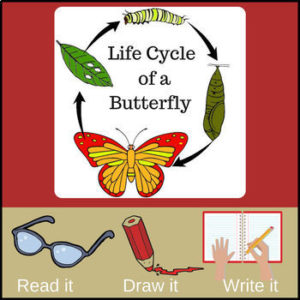 $2.00Buy Now
$2.00Buy NowThis Science – Language Arts resource with have students creating their very own mini-book of the life cycle of a butterfly!
Knowledge students will learn: The book will begin with the butterfly laying an egg on a leaf and continue as a caterpillar begins to grow in the egg, hatches and begins to eat. Students will learn what the caterpillar eats and that it is a type of larva. As the book progresses, students will write about the caterpillar building a cocoon and it’s life as a pupa (and a chrysalis) before emerging as a beautiful butterfly!
On each page, students will … read the text, draw a picture and then write (copy) the written text.

